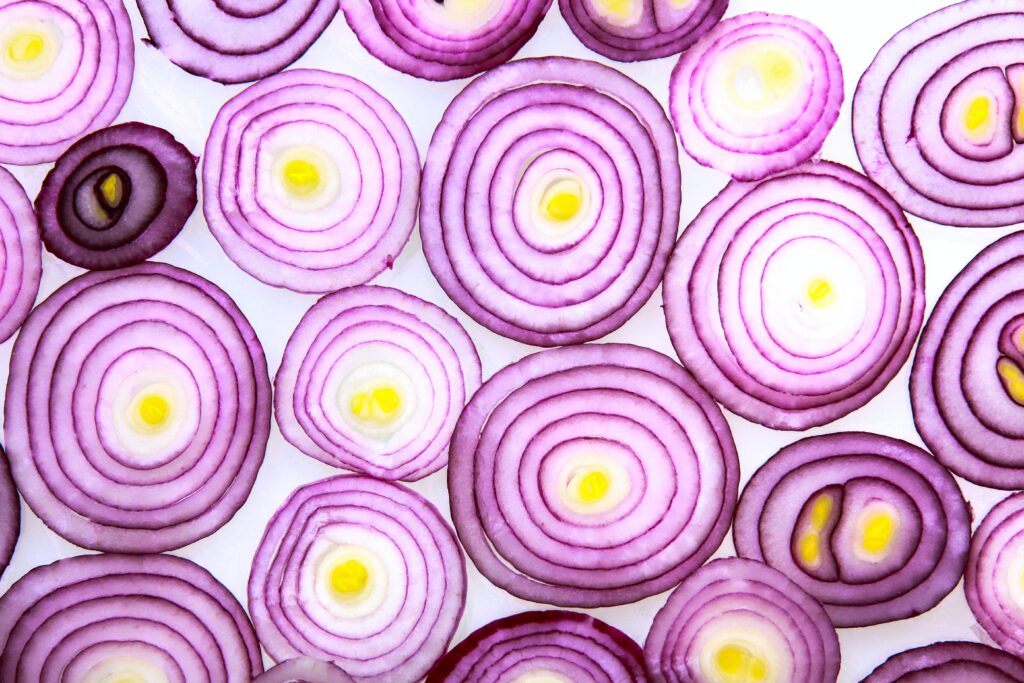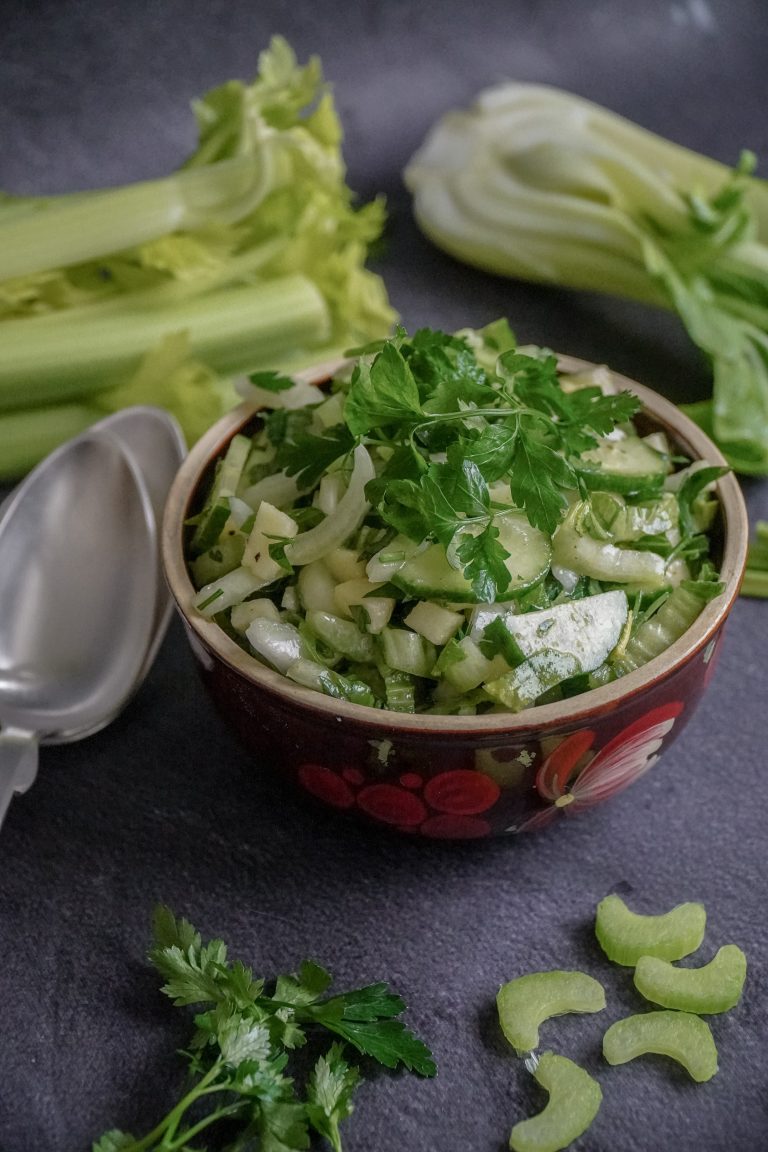Can Freezing Onions Prevent Crying?
When the recipe calls for onions, cooking is not an enjoyable activity. You have been reduced to tears if you don’t finish cutting onions.
It can be a very painful experience for some. Maybe you would like to know if freezing can be an option because there are proven methods to prevent this from happening.
Below is a list of what we found out after researching the topic.
One of the best ways to prevent tearing up while cutting onions is by freezing them.
If you place the onion in the freezer for at least 15 minutes, the lachrymatory-factor synthase won’t be able to convert the sulfenic acid inside the onion cells into its gaseous form.
When the gas gets into your eyes, it causes irritation which causes the lacrimal ducts to release tears.
We will discuss how to freeze onions in the future. Let’s discuss the reasons why freezing onions prevents you from crying.

Table of Contents
Why Does Putting an Onion Inside the Freezer Prevent You from Crying?
The cold temperature blocks the conversion of L-propenyl sulfenic acid to propanethial-S-oxide by deactivating the lachrymatory-factor synthase when onions are placed in the freezer.
When onion cells are damaged, they convert to sulfenic acid with the help of a group of amino acids called sulfoxide.
Water interacts with S-1-propenyl-L-cysteine sulfoxide when it is cut through the onion, which results in the creation of sulfur-containing compounds.
L-propenyl sulfenic acid is found in some of these. This is then converted into propanethial-S-oxide by the lachrymatory-factor synthase.
How a tear gas would react with your eyes is what propanethial-S-Oxide reacts to. The sulfur component interacts with the water present and produces sulfuric acid when it enters your eyes.
The presence of acid in the air causes your lacrimal ducts to release tears. The tears make the acid less corrosive to the feelings.
More enzymes convert the amino acids into the sulfur gas found in mature onions. It is thought that this trait is a natural defense against being eaten by animals.
Research has shown that the substances that cause tearing can also be used to kill other organisms.
Best Way to Freeze Onions
If you want to cut onions before freezing them, place them in the freezer with their skin and roots on. The tear-jerking gas can be stopped by freezing the enzymes that produce it.
It is believed that it is most concentrated in the roots. It is important to leave the skin because you don’t want to dry out the onion.
You can freeze them whole or chopped if you want to use them for storage. Blanching whole onions will take about 3 to 7 minutes depending on the size of the onion.
The onion needs to be blanched evenly up to the core for it to be blanched. If you diced or sliced onions, you don’t need to Blanch them.
The only thing you need to do is peel, cut, and pack.
Convenient packing of amounts fit for individual recipes can be accomplished by packing them in refrigerator bags or small freeze wares.
If you want to break a piece for use, you can just bang them onto a hard surface and pack them as one whole batch.

How Long Do You Need to Freeze Onion Before Cutting?
The duration of stay in the freezer before cutting can be determined by the individual onion size and the total amount of onions that you wish to cut.
It can range from 15 minutes to more than 30 minutes with the skin on. If you feel your onions, that’s all.
If they have cooled enough but not frosted, then you can take them out and process them before they go back to room temperature.
Is It Possible to Freeze Raw Sliced Onions?
You can freeze the onions. They can work with a variety of dishes. For 6 to 8 months, they can keep their flavor.
It’s not a good idea to freeze onions as it will make them lose their crunch. Ice crystals will prevent them from being brown when cooked, so don’t expect that.
If you want to chop onions large, you can either use the food processor or hand chop. If it’s available, select the dice function.
You can use the blade present but not overprocess if you don’t have a dice function. When you cook smaller pieces, they can become mush.
You should stay away from the vent when you add onions in batches or open the cover so you don’t inhale the fumes. If not, you will break down in tears.
You can place them in bags and freeze them. Lay them flat so that they freeze evenly. Place them in trays in the freezer for 2 hours before packing.
The second method can help reduce exposure to onions.
Measure out the needed amount for your use with the onions being separated. Depending on your usage, you can pack them accordingly.
A medium onion is equivalent to about 1.25 cups while a large onion can fill about 2.25 cups if diced.
How do you keep onions from making you cry?
If you want to prevent your eyes from tearing up, soaking your onions in water or chilling them before cutting will help.
While soaking the sulfenic acids in water absorbs the gas that can evaporate into your eyes when you cut, chilling prevents the enzymes from mixing with the sulfenic acids while you cut.
The onions should be soaked or chilled for at least 30 minutes. You might want to use a sharp knife to chop your onion.
The onion skin releases more propanethial S-oxide when the knife is crushed into it. Other measures that can be considered are the following.
- Turn on a fan or light a candle to illuminate the gas.
- Adding air into the equation will drive away from the gas, while the candle will absorb it.
- The onions should be cut in areas with drafts of air near the window or range hood.
- If you want to minimize your exposure to the tear-jerking chemicals found inside your onions, you should chop your onions with either a food processor or a blender.
- Before removing the skin from the root, it is a good idea to cut out the root.
- It is a good idea to not touch your eyes or wear goggles while cutting.
- You will not be able to see the gas in your eyes if you wear goggles.
- A piece of bread can be placed in your mouth while you slice it.
- If you want to slice the onions with the tubes facing away from you, slice the onions at an angle.
If you want to reduce your chance of tearing, you can use a combination of the above measures.
Conclusion
You cry when you slice onions because the cells are damaged as you cut them.
When they are damaged, they release a sulfur-containing gas that behaves like tear gas and irritates the eye.
There is a natural tendency for tears to be produced when exposed to it.
If you chill or freeze you will be able to reduce this as the cold temperature will make it harder for the onion cells to convert S-1-propenyl-L-cysteine sulfoxide to propanethial-S-oxide gas.

Foodie and a passionate cook, I am here to share all of what I know about cooking, kitchen, and food prepping.
Follow me for delicious and healthy recipes.







